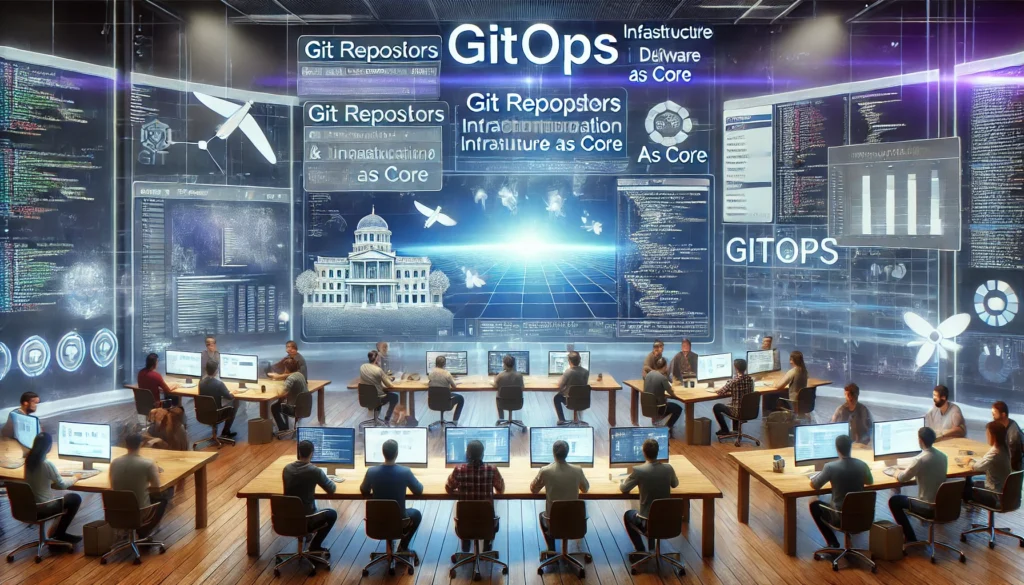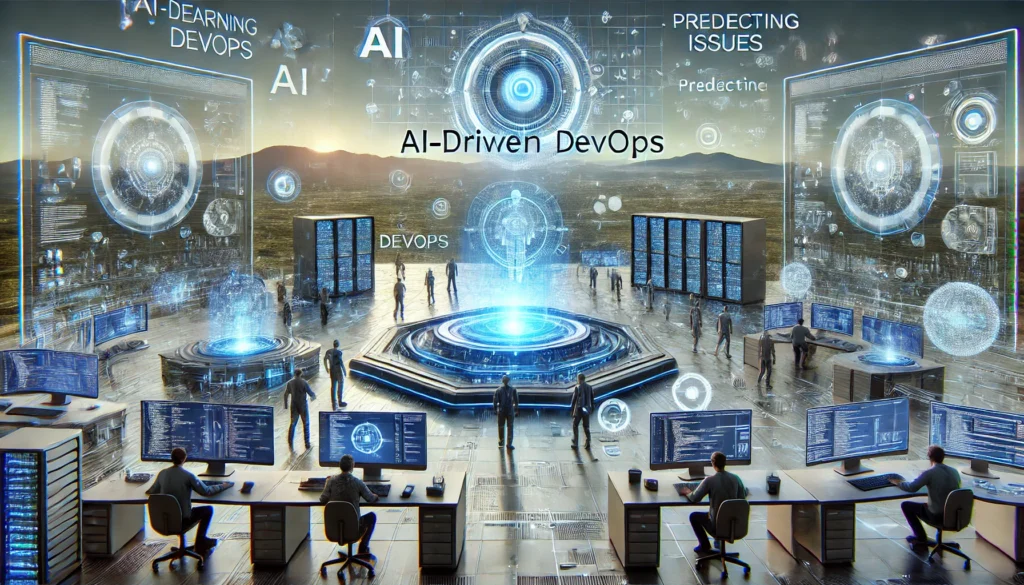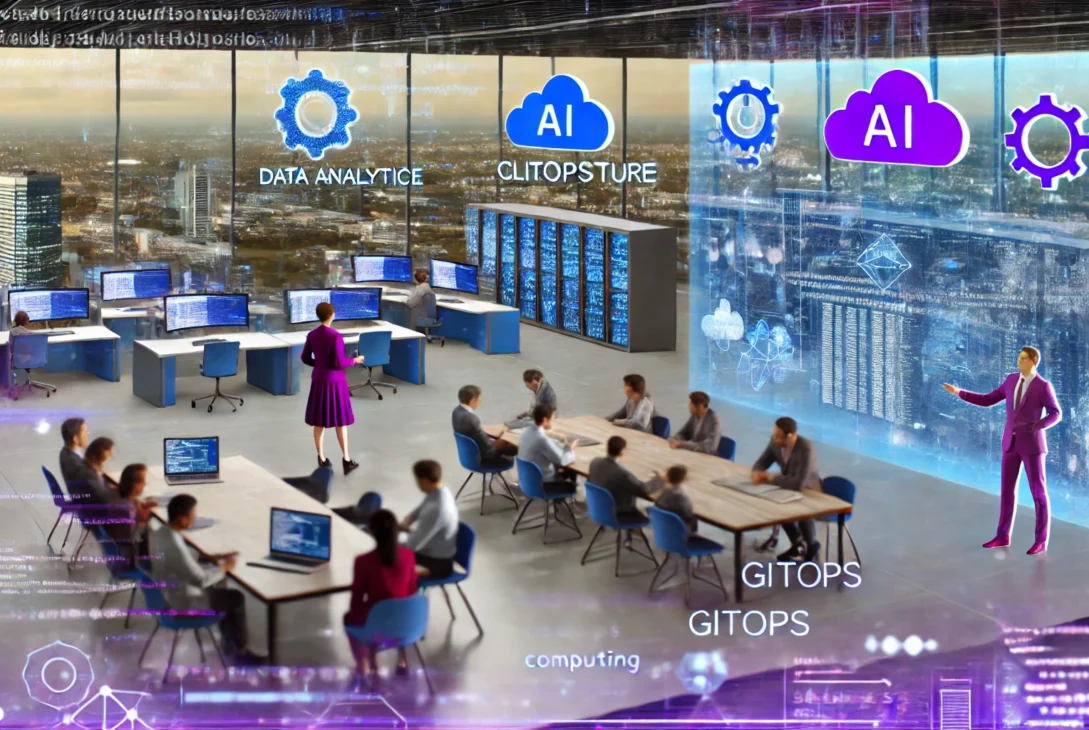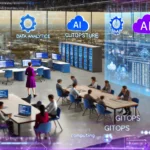Software development and IT industry is constantly tinkering with new tools, practices, and methodologies means have no choice but to stay at the bleeding margin of the latest DevOps trends. For tech enthusiasts and professionals, staying ahead of the curve is essential, but with so many trends circulating, how do you know which ones are worth your time and effort?
In this article, We’ll delve into the most talked-about DevOps trends of 2024, leveraging data and expert opinions to separate the signal from the noise.
DevOps Trends Follow a Familiar Pattern
Like many tech trends, DevOps trends often follow a predictable cycle, akin to the Gartner hype cycle.
But instead of following a smooth curve, DevOps trends can sometimes feel like a rollercoaster—just when you think you’ve mastered the latest tool or practice, a new one comes along, and you’re back at square one.
With so many trends to keep track of, it’s crucial to validate them before fully committing your resources.
We can do this by analyzing real-world data, industry reports, and user feedback to see which trends are gaining traction and which are likely to fade away.
1. Platform Engineering
Platform engineering has been touted as the next big thing in DevOps, promising to streamline workflows and reduce complexity.
But is it all it’s cracked up to be?
Data from recent industry surveys shows a growing interest in platform engineering, with search trends for the term steadily increasing over the past year.
However, despite the buzz, adoption rates remain relatively low, with many organizations still hesitant to invest in the necessary infrastructure and talent.
Should you follow? — It depends
Platform engineering can offer significant benefits, particularly for large organizations with complex IT environments. But for smaller teams or those already struggling with existing DevOps practices, the added complexity might not be worth the investment—at least not yet.

Further reading:
2. GitOps
GitOps is a methodology that uses Git as a single source of truth for managing infrastructure and application configurations. It’s been gaining popularity as a way to bring more structure and reliability to DevOps practices.
The trend data for GitOps shows a strong upward trajectory, with more organizations adopting this approach to automate their deployment pipelines and manage complex environments.
Should you follow? — Yes
GitOps offers a clear path to achieving continuous deployment and can greatly enhance collaboration between development and operations teams. If your organization is already using Git, adopting GitOps is a logical next step.
Further reading:
- Getting Started With GitOps For Developers!
- What is GitOps: Next Big Thing in DevOps & How it Can Make DevOps Even Better

3. AI-Driven DevOps
AI and machine learning have made their way into DevOps, with promises of smarter automation, predictive analytics, and enhanced decision-making.
But how much of this is hype?
Despite the excitement, the data shows that AI-driven DevOps is still in its infancy. While there are promising use cases, such as anomaly detection and automated testing, widespread adoption is still a few years away.
Should you follow? — Not yet
While AI has the potential to revolutionize DevOps, most organizations are not yet equipped to fully leverage these technologies. It’s worth keeping an eye on, but for now, focus on mastering the fundamentals.
Further reading:
- AI-Driven DevOps: Revolutionizing Software Development and Operations
- The future of DevOps – AI-driven software engineering in 2024

4. Serverless Computing
Serverless computing has been a hot topic in the DevOps community, offering the promise of reduced operational overhead and increased scalability.
The data shows a steady rise in interest, with more organizations experimenting with serverless architectures. However, there are still challenges, particularly around debugging, monitoring, and managing costs.
Should you follow? — Yes, with caution
Serverless computing can offer significant benefits, especially for applications with unpredictable workloads. But it’s not a silver bullet, and there are trade-offs that need to be carefully considered.

Further reading:
5. Infrastructure as Code (IaC) 2.0
Infrastructure as Code (IaC) has been a cornerstone of DevOps for years, but the next generation of IaC tools and practices is now emerging, promising even greater flexibility and control.
Search data indicates a growing interest in IaC 2.0, with new tools and frameworks gaining traction. However, the landscape is still fragmented, with no clear leader emerging yet.
Should you follow? — Yes
IaC 2.0 represents the future of infrastructure management, offering more powerful and flexible ways to manage complex environments. If you’re not already on board, now is the time to start exploring these new tools.
Further reading:
- A Brief DevOps History: The Roots of Infrastructure as Code
- 21 Infrastructure As Code Best Practices In 2024

Final Thoughts
Navigating the ever-changing landscape of DevOps trends can be challenging, but by staying informed and critically assessing each trend, you can make better decisions for your organization. Whether it’s platform engineering, GitOps, or the promise of AI-driven automation, understanding which trends are worth your time and which are just hype is key to staying ahead in the fast-paced world of DevOps.
FAQ
1. What is DevOps, and why is it important?
DevOps is a collaborative approach that combines software development (Dev) and IT operations (Ops) to shorten the development lifecycle and deliver high-quality software continuously. It emphasizes automation, integration, and communication between development and operations teams, allowing organizations to innovate faster and with greater reliability. DevOps is crucial because it enhances productivity, reduces time to market, and improves the overall quality of software products by ensuring continuous integration, delivery, and deployment.
2. What are the top DevOps trends to watch in 2024?
In 2024, several key trends are shaping the future of DevOps, including Platform Engineering, GitOps, AI-driven DevOps, Serverless Computing, and Infrastructure as Code (IaC) 2.0. These trends focus on improving automation, scalability, and efficiency in software development and IT operations. By staying informed about these trends, organizations can better navigate the rapidly evolving DevOps landscape and make strategic decisions to enhance their processes.
3. What is Platform Engineering, and how does it impact DevOps?
Platform Engineering is the practice of designing and maintaining internal platforms that streamline development and operations processes. It involves creating a cohesive infrastructure that integrates tools, workflows, and automation to support the entire software lifecycle. Platform Engineering can significantly impact DevOps by reducing complexity, improving collaboration, and enabling faster delivery of applications. However, its implementation requires careful planning and resources, making it more suitable for large organizations with complex IT environments.
4. Is GitOps a good fit for all organizations?
GitOps is a methodology that uses Git as the single source of truth for managing infrastructure and application configurations. It enhances deployment automation and infrastructure management, making it a valuable practice for organizations already using Git. However, GitOps may not be suitable for all organizations, especially smaller teams or those not yet familiar with Git-based workflows. Before adopting GitOps, organizations should assess their current capabilities and determine if they are ready to implement this approach effectively.
5. What role does AI play in DevOps?
AI-driven DevOps introduces artificial intelligence and machine learning into the DevOps pipeline to automate complex tasks, predict issues, and optimize decision-making. AI can be used for anomaly detection, automated testing, and predictive analytics, potentially revolutionizing how DevOps teams operate. However, the integration of AI into DevOps is still in its early stages, with widespread adoption expected to take a few more years. Organizations interested in AI-driven DevOps should focus on understanding its potential benefits while preparing their infrastructure and teams for future implementation.
6. Should organizations adopt serverless computing?
Serverless computing is an architectural model where cloud providers manage the infrastructure, allowing developers to focus solely on writing code. It offers benefits such as reduced operational overhead, automatic scaling, and cost efficiency. However, serverless computing is not without challenges, including difficulties in debugging, monitoring, and managing costs for certain workloads. Organizations should carefully evaluate these trade-offs before adopting serverless computing, ensuring that it aligns with their specific needs and workloads.
7. What is Infrastructure as Code (IaC) 2.0?
Infrastructure as Code (IaC) 2.0 represents the next evolution of IaC practices, focusing on more advanced tools and frameworks that offer greater flexibility and control over infrastructure management. IaC 2.0 enables organizations to define, deploy, and manage infrastructure in a consistent and repeatable manner, reducing errors and improving efficiency. As the landscape of IaC tools continues to evolve, IaC 2.0 is becoming essential for organizations looking to scale their operations and manage increasingly complex environments.
8. How can organizations determine which DevOps trends to follow?
With so many DevOps trends emerging, it can be challenging to determine which ones are worth investing in. Organizations should start by analyzing real-world data, industry reports, and user feedback to assess the potential impact of each trend. Additionally, engaging with industry experts and participating in relevant communities can provide valuable insights. By validating trends before fully committing resources, organizations can make informed decisions that align with their goals and capabilities.
9. What are the challenges of adopting Platform Engineering?
Adopting Platform Engineering involves significant challenges, including the need for substantial investment in infrastructure, tools, and talent. Organizations may also face cultural and organizational resistance as they shift towards a more integrated and automated platform. For smaller organizations or those with limited resources, these challenges may outweigh the benefits, making it crucial to carefully consider whether Platform Engineering is the right fit for their needs.
10. What benefits does GitOps provide to DevOps teams?
GitOps offers several benefits to DevOps teams, including a centralized, version-controlled repository for infrastructure and application configurations. This approach improves collaboration between developers and operations teams, enhances deployment automation, and provides a clear audit trail for changes. By using Git as the single source of truth, GitOps also simplifies rollback processes and ensures consistency across environments, making it a valuable practice for organizations focused on continuous integration and delivery.
11. Is AI-driven DevOps ready for mainstream adoption?
AI-driven DevOps holds great promise, but it is not yet ready for mainstream adoption. While AI can automate complex tasks, enhance predictive maintenance, and optimize decision-making, most organizations are not equipped to fully leverage these technologies. The current state of AI-driven DevOps is still in its infancy, with limited use cases and tools available. Organizations should keep an eye on this trend and invest in foundational AI skills and infrastructure to prepare for its future adoption.
12. How does serverless computing affect scalability?
Serverless computing inherently supports scalability by automatically adjusting the computing resources based on the demand. This makes it particularly useful for applications with unpredictable or fluctuating workloads, as the infrastructure can scale up or down without manual intervention. However, while serverless computing offers excellent scalability, organizations must also consider factors such as cost management and application architecture when adopting this model to ensure it meets their specific needs.
13. What are the key features of IaC 2.0?
IaC 2.0 introduces several key features, including enhanced modularity, better integration with modern development practices, and improved automation capabilities. These features allow organizations to manage their infrastructure more effectively, with greater flexibility and control. IaC 2.0 also supports advanced use cases, such as multi-cloud deployments and complex environments, making it an essential tool for organizations looking to scale their operations and improve infrastructure management.
14. Can small teams benefit from Platform Engineering?
While Platform Engineering is typically more beneficial for large organizations with complex IT environments, small teams can also benefit if they have the necessary resources and expertise. By implementing Platform Engineering, small teams can streamline their workflows, reduce operational complexity, and improve collaboration. However, the added complexity and investment required may not be feasible for all small teams, so it’s essential to carefully assess whether Platform Engineering aligns with their specific needs and capabilities.
15. What is the future of AI in DevOps?
The future of AI in DevOps is promising, with the potential to transform how organizations manage and optimize their software development and IT operations. AI is expected to play a significant role in automating routine tasks, enhancing predictive maintenance, and improving overall system reliability. As AI technology continues to advance, we can expect to see more sophisticated AI-driven tools and platforms that integrate seamlessly into DevOps workflows, enabling organizations to achieve higher levels of efficiency and innovation.
16. How do organizations implement GitOps?
To implement GitOps, organizations need to use Git as the central repository for all configuration files and manage infrastructure and application changes through automated pipelines. This involves setting up continuous integration/continuous deployment (CI/CD) pipelines that monitor the Git repository for changes and automatically deploy them to the appropriate environments. Implementing GitOps also requires adopting practices such as version control, pull requests, and code reviews to ensure consistency and reliability across the infrastructure.
17. What are the pros and cons of serverless computing?
Serverless computing offers several advantages, including reduced operational overhead, automatic scaling, and cost efficiency for certain workloads. However, it also comes with challenges such as limited control over the underlying infrastructure, difficulties in debugging and monitoring, and potential cost management issues for high-traffic applications. Organizations should carefully evaluate these pros and cons to determine whether serverless computing is the right fit for their specific use cases and workloads.
18. What should organizations consider before adopting IaC 2.0?
Before adopting IaC 2.0, organizations should evaluate the maturity of available tools, the complexity of their infrastructure, and their teams’ readiness to adopt new practices. It’s essential to ensure that the organization has the necessary skills, resources, and processes in place to support IaC 2.0. Additionally, organizations should consider the potential impact on existing workflows and whether IaC 2.0 aligns with their long-term strategic goals.
19. How can teams stay updated on DevOps trends?
Staying updated on DevOps trends requires continuous learning and engagement with the broader DevOps community. Teams can follow industry blogs, attend conferences and webinars, participate in online forums and communities, and subscribe to newsletters that cover the latest developments in DevOps. Additionally, teams should actively seek out opportunities to experiment with new tools and practices, gathering insights from real-world experiences to stay ahead of the curve.
20. What is the Gartner hype cycle, and how does it relate to DevOps trends?
The Gartner hype cycle is a model that describes the maturity, adoption, and social application of specific technologies. It typically consists of five phases: Innovation Trigger, Peak of Inflated Expectations, Trough of Disillusionment, Slope of Enlightenment, and Plateau of Productivity. DevOps trends often follow a similar pattern, where initial hype is followed by a period of disillusionment before reaching mainstream adoption. Understanding this cycle can help organizations better navigate emerging trends, distinguishing between short-lived hype and long-term value.
Got questions? Ping us on our LinkedIn.






